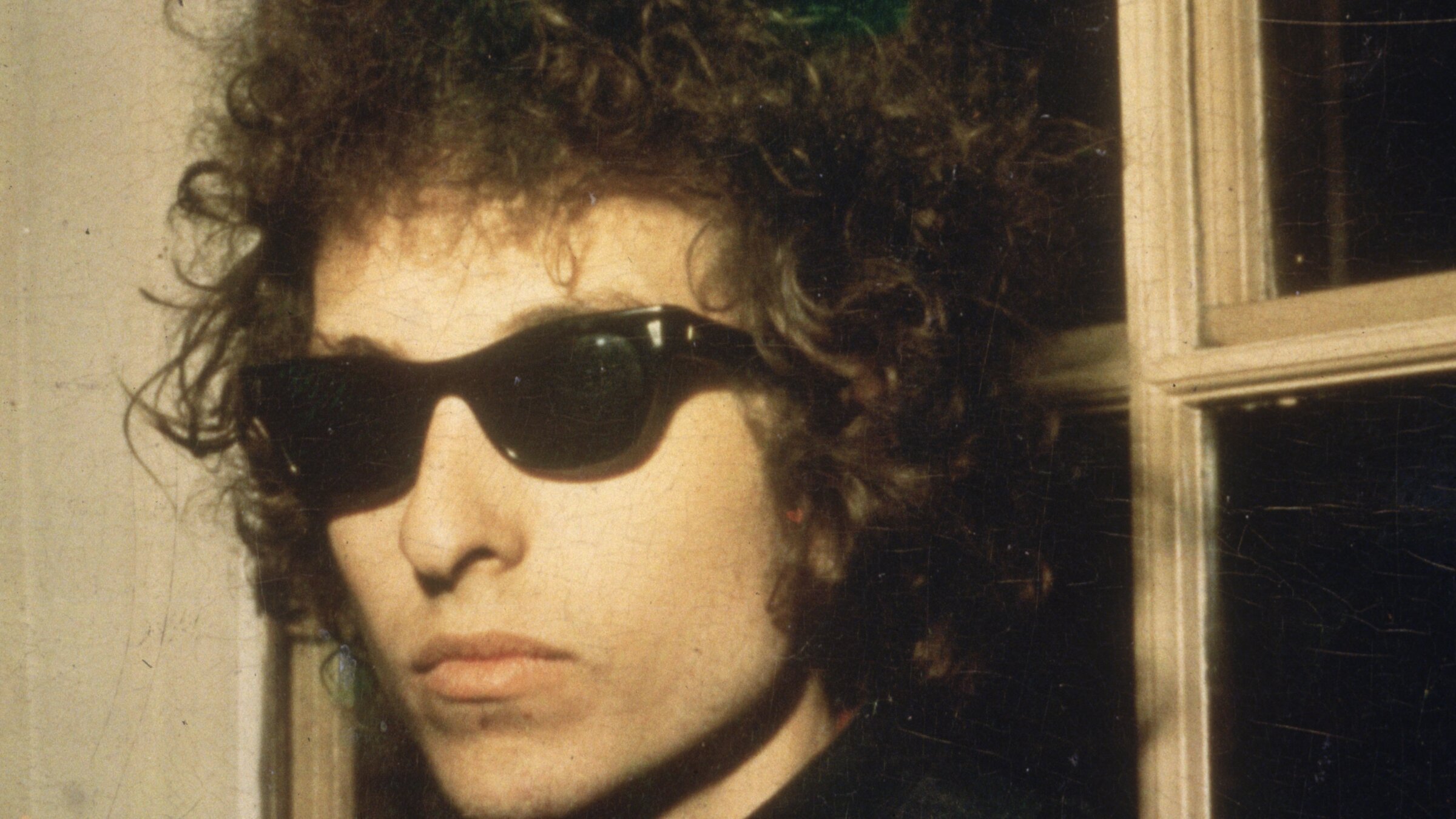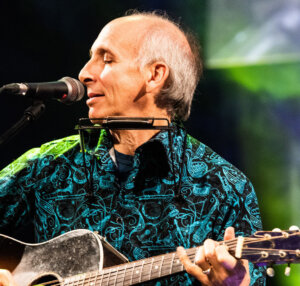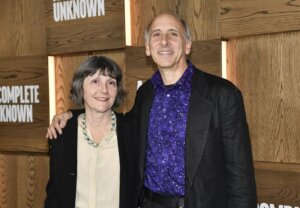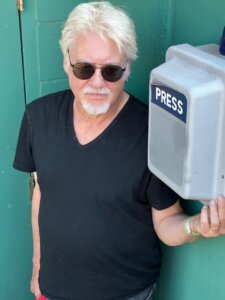For Bob Dylan’s biographer, ‘A Complete Unknown’ is a dream come true — even if it’s mostly fiction
Elijah Wald’s ‘Dylan Goes Electric’ inspired the new Timothée Chalamet-led Dylan biopic

Bob Dylan in London, 1966. Photo by Getty Images
If you’re a music writer, it doesn’t get much better than this: You’ve written 15 historical books, but this one is about a key, formative period in Bob Dylan’s life and career. Published in 2015, it gets optioned by Dylan’s people, and nine years later made into a movie starring Timothée Chalamet and directed and co-written by James Mangold. It opens on the first day of Hanukkah and Christmas Day and then … Bob Dylan posts this on the social platform X:
There’s a movie about me opening soon called A Complete Unknown (what a title!). Timothée Chalamet is starring in the lead role. Timmy’s a brilliant actor so I’m sure he’s going to be completely believable as me. Or a younger me. Or some other me. The film’s taken from Elijah Wald’s Dylan Goes Electric — a book that came out in 2015. It’s a fantastic retelling of events from the early ’60s that led up to the fiasco at Newport. After you’ve seen the movie read the book.
“That absolutely blew my mind,” Wald told me over the phone. “What I had heard from Jeff Rosen, who is Dylan’s manager, was Bob doesn’t read Dylan books. So, I had not expected this. I had sort of taken it for granted that Dylan had read my Robert Johnson book, but this completely caught me off guard. I’m thrilled. I think this is the first Dylan book he’s said anything positive about since Anthony Scaduto’s book,” 1972’s Bob Dylan: An Intimate Biography.

The full title of Wald’s book is Dylan Goes Electric! Dylan, Seeger, Newport, and the Night that Split the Sixties and the book’s climax is indeed that famous night of July 25, 1965, when Dylan plugged in and played three songs with a loud rock band.
The more he dug into Dylan, the more he found. In 2015, Wald told me, “The thing that I hadn’t realized until I looked at the numbers is he was a political songwriter for maybe a year-and-a-half. It’s a tiny, tiny stretch. By the time people recognized him as a political songwriter he was already past that. By the time ‘The Times, They-Are-A-Changing’ came out, he wasn’t writing that stuff anymore. That startled me.”
Of Dylan Goes Electric!, Wald said, “It has plenty of Dylan in it, but it really is a history of the period and Newport and all of that. I have no reason to think Dylan wouldn’t find it interesting because it’s not really about him. Parts of it are, obviously.”
Wald co-wrote a book with folk singer Dave Van Ronk, Mayor of MacDougal Street; A Memoir, upon which the Coen brothers loosely based the New York folk scene-set film, Inside Llewyn Davis.
“It is a world that I know in a way I think most Dylan folks don’t,” Wald said, “with the obvious exception of Robert Shelton [who published No Direction Home: The Life and Music of Bob Dylan in 1986]. I would guess he would enjoy the way I framed Seeger because Seeger always gets short shrift in Dylan bios.”
Wald, now 65, said he had the idea for Dylan Goes Electric! early in 2014. The publisher wanted it on the shelves by summer 2015, so Wald said, “I had only six months to research and write it. Of course, I’d been in that world my whole life, had spent all that time with Van Ronk, played with Eric Von Schmidt and Peter Stampfel, had dinner a couple of times with Seeger, knew a bunch of the other people, the music, and the politics, and had most of the relevant phone numbers — but it was still the most concentrated work I’ve done on anything, ever.”

This month, Wald has attended two advance screenings of A Complete Unknown. How close does the movie hew to the book’s narrative?
“They say that the film is based on my book,” says Wald. “But the film has virtually nothing in it that’s from my book. There are hundreds of moments [in the film] that didn’t happen. The film is fiction.”
Wald starts ticking off movie scenes that never happened in real life — Dylan arriving at Newport on a motorcycle, Van Ronk telling Dylan that Woody Guthrie is in the hospital, Dylan visiting Guthrie’s bed finding Pete Seeger there, Seeger giving him a lift home and staying over at Seeger’s place that night. “And that’s just the first five minutes of the film.”
Another issue: The film has Dylan playing the day’s closing set at Newport. He did not. “He was the second-to-last performer in the first half, sandwiched between Cousin Emmy and the Morning Star Hall Singers,” said Wald.
Wald goes on — Joan Baez (played by Monica Barbaro) being part of the Greenwich Village folk scene (no, Cambridge, she hated New York), Baez and Dylan singing “The Girl from the North Country” together on stage, a tour that was purportedly co-headlined by Dylan and Baez when in fact Baez was the star. “She was nice enough to bring Bobby on it,” Wald said, “but he was, if anything, considered a problem by the audience, not an addition.”
For A Complete Unknown, they renamed Suze Rotolo, Dylan’s girlfriend at the time, at Dylan’s request, Wald said. Called Sylvie Russo in the movie, she is played by Elle Fanning. Still, Wald said, “I don’t think the film is inaccurate in terms of their relationship.”
“The example that keeps coming back to me, though,” Wald continues, “is the morning after the whole craziness goes down at Newport — with Dylan riding off on his motorcycle past the fairgrounds where Pete Seeger is helping put away the folding chairs. Dylan did not have his motorcycle at Newport and I don’t think Pete Seeger was out that morning putting away folding chairs.”
So, Wald didn’t dig the movie?
Au contraire.
“I liked it a lot,” said Wald. “My book isn’t fiction; the movie is. It’s not historically accurate, but it’s poetically accurate. In the movie, I think it’s the first time anyone framed that whole history of Dylan and Seeger and that they took from the book. They had Dylan’s normal personal relationship with Van Ronk, his hanging out with all these people in the Village and he really captured Seeger in a more professional context.”
Wald considers the pace of the film, even coming in at 2 hours and 20 minutes, appropriately fast. The characters have not been dumbed down, he said, and the musical performances are excellent.
“What they have done with the film,” he said, “is they’ve taken my idea of looking at the overall story of Dylan vs. the folk scene represented by Seeger and made that into a thread that runs through the movie. It historically captured who they were and what their relationship was to each other at Newport.”
“I guess the way I would frame it is they read my book to understand what the history was and then wrote a story which happens within that world. The things they do make sense.”
And, though Dylan had evidently not yet seen the film when he posted the rave, Wald said, “My sense is that he likes movies and he has never had any hesitation about fictionalizing his life.” Dylan has said he liked I’m Not There, the 2007 movie where six different actors portrayed him in different phases of life, and was a co-conspirator fictionalizing the 2019 quasi-documentary Rolling Thunder Revue: A Bob Dylan Story by Martin Scorsese.
One made-up scene Wald particularly liked in A Complete Unknown was Dylan jamming with Jesse Moffette, a Delta blues singer-guitarist played by Muddy Waters’ son Big Bill Morganfield, and Seeger, played by Edward Norton. Wald was all set to hit the roof, half-expecting Mangold to have Seeger take umbrage or walk out. “But you see Pete picks up a banjo and plays some understated but effective blues banjo. Which he did in fact at the Newport Jazz Festival the week before with Memphis Slim and Willie Dixon. He was a very competent blues player, as much as you can be on a five-string banjo. I was really impressed by details like that.”

Wald said A Complete Unknown “feels true to the people who are in it,” but registers some notable omissions, mainly Peter, Paul & Mary. Wald said Peter Yarrow and Noel Paul Stookey — the surviving members — might have a beef. “They are virtually non-existent when in fact [their versions of early Dylan songs were] what made Bob Dylan world famous. Peter Yarrow is a character in the film but only tangentially as part of the board of directors at the Newport Folk Festival. Joan Baez is the other star figure who was popularizing him and even that is understated.”
One not-insignificant part, Wald said, was spot on: how Chalamet portrays Dylan. “Jesus Christ, he’s good!” Wald said. “As a guitar player, I’m astonished. If you want to learn how Dylan was playing those things you can watch Chalamet because he really, really got it.”
Wald said even before the movie has come out, sales for his book have kicked up and it’s back in Amazon’s Top 20 of music books. “We have a new printing with a burst on the front — ‘the inspiration for the movie A Complete Unknown.’ When I say that I feel like I won the lottery, I am not kidding. Especially when I think of all the Dylan books, which must be about the same number of lottery tickets.”

















